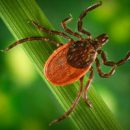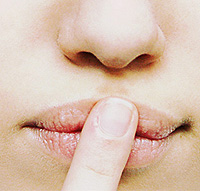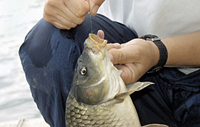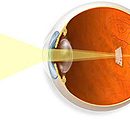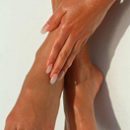What is a siny stick? Which infections cause a siny stick? How they manifest? Answers to these questions you will find in the article.
Content
Singny stick
Pseudomonas Aeruginosa (Sinenny Wand) - a small aerobic gram-negative wand, straight or slightly curved, movable, growing on most conventional environments and not forming a dispute. It belongs to the Pseudomonadaceae family. Bacteria is movable thanks to a single flagella located on one of the poles. More than half of the strains isolated in patients form a blue-green pigment pyocianine, to which bacterium is obliged to its species name (Lat. Aerugo - Copper Rust).
Spreading of the cinema stick
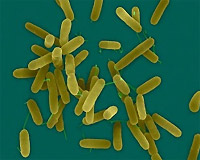 Sinnaya wand is common everywhere. It dwells in the soil, water, on
Sinnaya wand is common everywhere. It dwells in the soil, water, on
Plants, in animal and human body. Bacterry prefers a wet environment. Sometimes she populates the skin, an outer hearing pass, the upper respiratory tract and a large intestine in healthy people. The prevalence of carriage is small.
However, among people of seriously ill, hospitalized, recently receiving antibiotics or with
weakened immunity, the prevalence of the carriage of the cinema stick is significantly higher. IN
these circumstances of carriage often precedes the development of infection.
In most cases, a siny stick causes hospital infections . The source of infection is the most varying items: equipment for IVL, endoscopes, liquid detergents,
Disinfectants, Wastewater, Baths and Pools, Vegetables, Flowers. Sinnaya wand usually dwells in high humidity. It is believed that it is transmitted through the hands of medical personnel and the objects. Some strains of the Singenic wand are found on the hospital objects constantly, others, spreading from any one source, cause epidemic outbreaks.
Development of infections caused by a blue rod
Favorable conditions for the occurrence of inflammation are created in disruption of skin and mucous membranes (burns, wounds, surgical interventions, tracheal intubation, installation of blade catheter, in / in drug injection), weakening the protective forces (malignant neoplasms, chemotherapy, hypogammaglobulinemia, chest and old age, Diabetes mellitus, fibrosis, HIV infection), suppressing normal microflora antibiotics of a wide range of action, as well as while staying in the hospital.
The cynical wand is usually first attached to the skin or mucosa, multiplies on their surface, and then embedded into deep-breeding fabrics. This process can lead to the penetration of the pathogen into the bloodstream, the spread of infection through the blood and the development of sepsis, which often ends with death. On the other hand, infection can remain localized or spread only to adjacent fabrics.
Pneumonia caused by a blue chopstick
Pseudomonade pneumonia occurs mainly in patients with weakened
Immunity. Most often, it is found in patients who are on artificial ventilation of the lungs
(IVL).
Primary pseudomonade pneumonia - acute, threatening life infection flowing with chills ,
fever, heavy shortness of breath, cough (often with mocroid), anxiety, stunning and other
Symptoms of severe intoxication.
Septic (hematogenic) pneumonia is observed in patients with hemoblastosis, especially on the background
Reduction of the number of leukocytes caused by chemotherapy. It begins as an infection of the upper respiratory tract with the subsequent penetration of the pathogen into the bloodstream, which is accompanied by a separation of its organism and the formation of foci in the lungs and other organs. For this lightning infection, the hemorrhage and destruction of the lung fabric are characteristic of. For this pneumonia, very high temperature, cough, headache, weakness, violation of consciousness. After 3-4 days, death comes.
In patients with fibrosis, mainly in older children, adolescents and young people,
There is a chronic pseudomonade pulmonary infection. In patients with cystic cycidosis
The mucus-forming strains of Pseudomonas Aeruginosa populate the lower respiratory tract, contributing
Progression and exacerbations of chronic pseudomonade pulmonary infection. Availability in sputum
Sinnaya sticks are usually combined with the defeat of the bronchi. However, it is not known what happens earlier - blockage of the respiratory tract of mucous traffic jams or the development of infection. It is only known that the defeat of the respiratory tract begins with bronchipolitis, which is accompanied by the formation of viscous sputum and predisposes to pseudomonade infection. The latter leads to strengthening the formation of sputum, chronic purulent inflammation, bronchiectases, the atelectasis of the lungs and, in the end, to pneumosclerosis. In the exodus develop respiratory failure, oxygen starvation, which leads to violations in the work of the heart.
First, the disease is manifested by the runny nose and other typical symptoms of the lesions of the upper
respiratory tract that arise from time to time and are accompanied by a long cough.
Later develops repeated pneumonia. Cough between exacerbations no longer stops. In addition to
A permanent cough with a sputum is noted decreased appetite, weight loss, growth delay, lethargy.
Possible whistling breathing, irritability. With exacerbations, well-being worsen,
Cough is enhanced, the temperature rises to subfebrile.
Sepsis caused by a blue rod
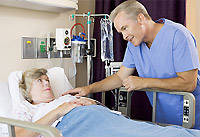
Patients with weakened immunity Pseudomonas Aeruginosa is one of the most common gram-negative pathogens of sepsis. Pseudomonad sepsis usually sick leave.
Distinguish primary (in the absence of a focus of infection) and secondary sepsis, in which there is
emergency hearth infection.
Pseudomonade sepsis arises against the background of sharply reduced immunity, heavy burns, dermatitis,
diabetes, HIV infection, as well as in premature. Chemotherapy (due to neutropenia and ulceration of mucous membranes), installation of urinary catheter and tool studies of urinary tract, vessel catheterization, surgical interventions, treatment with glucocorticoid and antibiotic therapy.
Sepsis begins with chills, increase temperatures up to 39-40 degrees. There is a rapid pulse,
Student breathing, sharp weakness, non-discontinued disorientation, stupidity, confusion of consciousness.
Blood pressure decreases up to the development of shock. With pseudomonade sepsis often
Opports jaundice.
Sign of Pseudomonad Sepsis - Gangrenous Extim, but it develops only at a small share
Patients. Skin lesion begins with the appearance of small bubbles filled with bloody
Content and surrounded area of redness. In the future, the center of elements is developing
Ulceration. Single or few elements are located in the crotch, on the buttocks,
limbs, in the axillary depressions and other parts of the body. Rash, similar to EXIM, sometimes
appear on gums and mucosa.
The diagnosis of pseudomonade sepsis is not labor. In the study from the blood allocate
Singny stick. In the material taken from the gangrenous ectima, the blue rod is easy
Detected when painting smear by gram and sowing.
Endocarditis caused by a blue chopstick
Pseudomonas Aeruginosa causes endocarditis in injecting drug addicts as well
Endocarditis prosthetized valves.
Injecting drug addicts, the source of infection seems to be the water used for
Heroian breeding. Foreign impurities in the heroin powder can cause damage to the valves and the inner shell of the heart (endocardium).
Pseudonadded endocarditis of a three-risk valve and right heart departments is often complicated
Septic lung artery embolism. Septic pulmonary embolism is accompanied by a cough with a moocrote, pain in the chest, increasing with breathing by the formation of infiltrates in the lungs, liquid in the pleural cavity.
The diagnosis of pseudomonadened endocarditis is based on the selection of the blue chopstick in the creation of blood, detecting changes in ECCG, detection of radiographic changes, characteristic of the septic pulmonary artery embolism (with endocarbage of the right heart departments).
CNS infection caused by a blue rod
Infections of the central nervous system caused by a blue rod occur by directly propagating the pathogen with adjacent structures (ear, a depository process, nasal sinuses), by introducing the pathogen in the structures of the brain (in crank-brain injuries, surgical interventions, invasive studies) or due to Transferring infection with blood from a remote focus. They meet, like pseudomonade infections of other localization, almost exclusively with the weakening of the body's protective forces. They predispose neurosurgical operations, penetrating the cranic and brain injury, lumbal puncture, spinal anesthesia, malignant tumors of head and neck, infection related with cerebral structures of anatomical structures, pseudomonad sepsis.
Such infections of fever, headache, stunning, confusion are manifested. At
hitting the blue rod in the blood of the disease occurs sharply, sometimes lightning, with sharp
deterioration of state, shock, coma.
Otitis caused by a blue rod
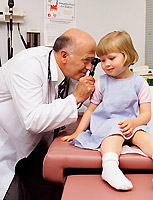
The cinema wand is the most frequent causative agent of acute outdoor otitis. The development of the disease is promoted by increased humidity, maceration and skin inflammation («Ear Swimmer»). It is accompanied by pain in the ear or itching in the ear, purulent separated from the outer auditory passage, pain when sinking for the ear shell. The walls of the outdoor auditory pass. The disease usually passes on their own.
Sometimes a siny stick through the fabrics, linseling the outer hearing passage above the connection site of the cartilage with bone, penetrates into soft fabrics. This leads to a sluggish destructive process, breathtaking soft tissues, cartilage and stuff. Such an outdoor otitis is called necrotic. It is mainly found among the elderly patients with diabetes, occasionally - seriously sick inast children and elderly, not suffering from diabetes.
The first symptoms of necrotic otitis - pain in the ear and separated from the outer auditory
Passage. It is usually first amazed by the face nerve, later - other cranial nerves . Pightness is possible. Own sink sickness. Common symptoms, in particular fever and weight loss, Negas. The drum blade is usually unable to consider; It is possible to perforate. Inflammation can embrace ear sink and adjacent fabrics. Rarely, but there is a bilateral necrotic outdoor otitis.The cynical wand seems to play a major role in the development of chronic average purulent otitis in children and adults. In most patients, it is isolated from the pus obtained from the drum cavity or an outer auditory passage - one or as part of a mixed microflora.


